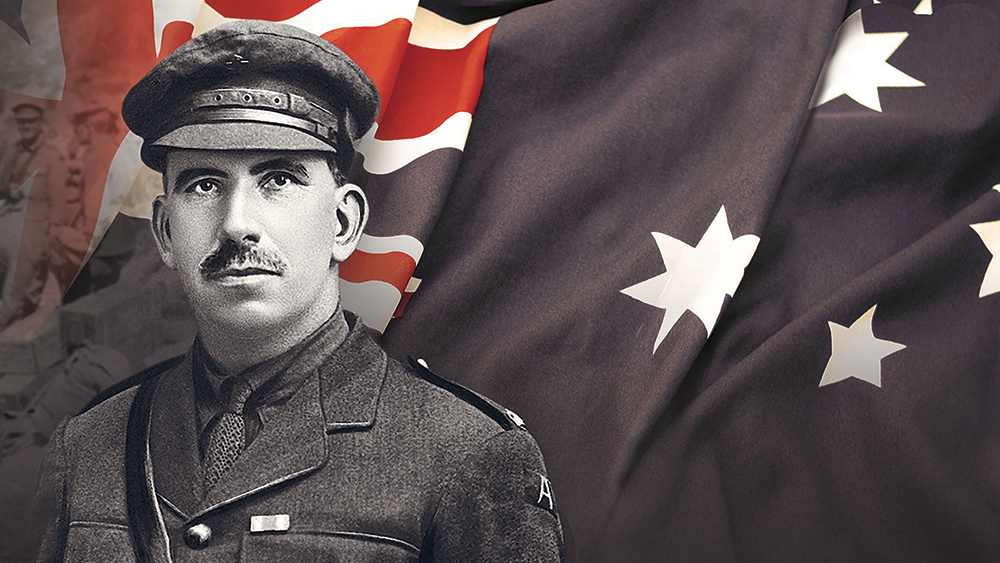The Great War traumatised an Anzac chaplain even though his prolific writing “put words upon that which is unspeakable”, a paper by three Avondale academics shows.
William “Fighting Mac” McKenzie served at Gallipoli and on the Western Front as chaplain of the Australian Imperial Force’s 4th Battalion. The Scottish-born Salvation Army officer wrote thousands of letters—to families of soldiers, members of the public, Salvationist Australasian Territorial Commander Commissioner James Hay, excerpts from which appeared in The War Cry, and to his wife and children.
Despite describing his experiences as “beyond telling”, McKenzie “consistently, even compulsively, reverted to words to convey them”, write associate professor Daniel Reynaud, Dr Carolyn Rickett and Paul Bogacs. But identifying and burying dismembered corpses, often under shell fire, and the voluminous correspondence with distressed relatives “eventually undermined [McKenzie’s] health and degraded his capacity to serve”.
Reynaud, Rickett and Bogacs’ study of the surviving McKenzie correspondence shows symptoms of post-traumatic stress disorder, including depression and a degrading of coherent meaning, uncontrollable trembling, persistent nightmares and chronic memory loss. McKenzie also suffered neuritis, “which left him in physical agony and barely able to crawl on all fours”, recurring fevers, vomiting and diarrhoea.
McKenzie’s compulsion to write, “wrestling with the complexity of attempting both to reveal and conceal experiences shaped by trauma”, represents “an intrinsic need to record linguistically the disaster of war and disclose its traces rather than try to erase its impact through complete silence”. This therapeutic use of language helped McKenzie “retain his perception of coherence, cohesiveness and connection. . . . [He] reclaimed, re-visited, re-visioned and re-versioned events, especially in the light of his faith and mission.”
Writing can help us make belated sense of distress because it converts emotions and images into words, says Dr Rickett, assistant dean (research) in the Faculty of Arts, Nursing and Theology and co-editor of an anthology as part of the New Leaves research project, which examines the relationship between writing poetry and healing. She and Sue Joseph from the University of Technology Sydney are also recipients of a grant from the Journalism Education and Research Association of Australia to improve higher degree by research supervision of long-form trauma narrative. [pullquote]
The conversion changes the way we think about trauma, says Dr Rickett. “It orders our thoughts, externalises them and provides an opportunity to share them with an empathetic reader.” But she notes the increasing academic research on how writing can re-traumatise the writer.
“Beyond telling: Narrating trauma in the wartime writings of Great War AIF Chaplain William McKenzie” classifies McKenzie’s narratives in two other ways: writing performance and writing therapeusis.
The former consists of the letters McKenzie wrote in his formal role as chaplain. His status as a “privileged communicator”—McKenzie’s letters were not censored—allowed him to “speak with a frankness that many other soldiers did not enjoy”. But his intended audience shaped the way McKenzie wrote. Reynaud, Rickett and Bogacs describe the construction of war experiences in letters to families about the fate of their loved ones as “careful” and “pastoral”, framed in a way “that showed a positive contribution from the subject soldier”. In letters to Hay, his superior at the Salvation Army, McKenzie emphasised the evangelistic success of his work. His writing “elided over some of the realities of war in favour of an upbeat context of spiritual salvation, national pride or personal honour”. Ironically, as conditions worsened in France and McKenzie’s own state deteriorated, his public letters “assumed a more flamboyant and humorous style”. These writing performance narratives revealed and concealed; the language obscured and deformed experiences but McKenzie “found many willing listeners to hear it”.
The latter—writing therapeusis—consists of McKenzie’s diary and his letters to his wife and children. The personal motivation for writing the diary “demonstrated a much greater engagement with the capacity for telling the untellable”. McKenzie’s “raw and unprocessed” entries captured “the fragmentation characteristic of traumatic experiences, but they named the trauma graphically, ensuring the memory did not become repressed”. His letters to his children, though, contained almost no information about the war, “save for the occasional promise of battle souvenirs for the boys”. These “offered McKenzie a haven of imaginative engagement . . . a kind of positive disassociation”. Letters to Annie, his wife, were different. As the war progressed, they “became more and more confessional, naming his trauma and giving voice to the unspeakable”. Reynaud, Rickett and Bogacs call this writing McKenzie’s most effective therapeutic because the letters demonstrated the safety of “pouring out his unprocessed feelings . . . without the need to clean them up for consumption”.
The sustained trauma McKenzie experienced would eventually prove too much. Despite his resilience—Professor Reynaud, who wrote a biography of McKenzie, The Man the Anzacs Revered, describes him as a “powerful personality who had the charisma to draw many people to him”—and healthy engagement through writing, McKenzie retired from service due to ill-health.
McKenzie would become the most famous Anzac by the end of the war despite being a non-drinking “wowser”. His story is “an example of the power of genuine engagement in the midst of suffering and brokenness”. A sign, perhaps, of a mature faith, says Mr Bogacs, “where we don’t see God as an insurance policy or vending machine but as a journeying Companion who is with us even when we walk in the shadow of death”.
The paper appears in the current issue of the TEACH Journal of Christian Education, published by Avondale Academic Press.
Brenton Stacey is Public Relations officer for Avondale College of Higher education.






